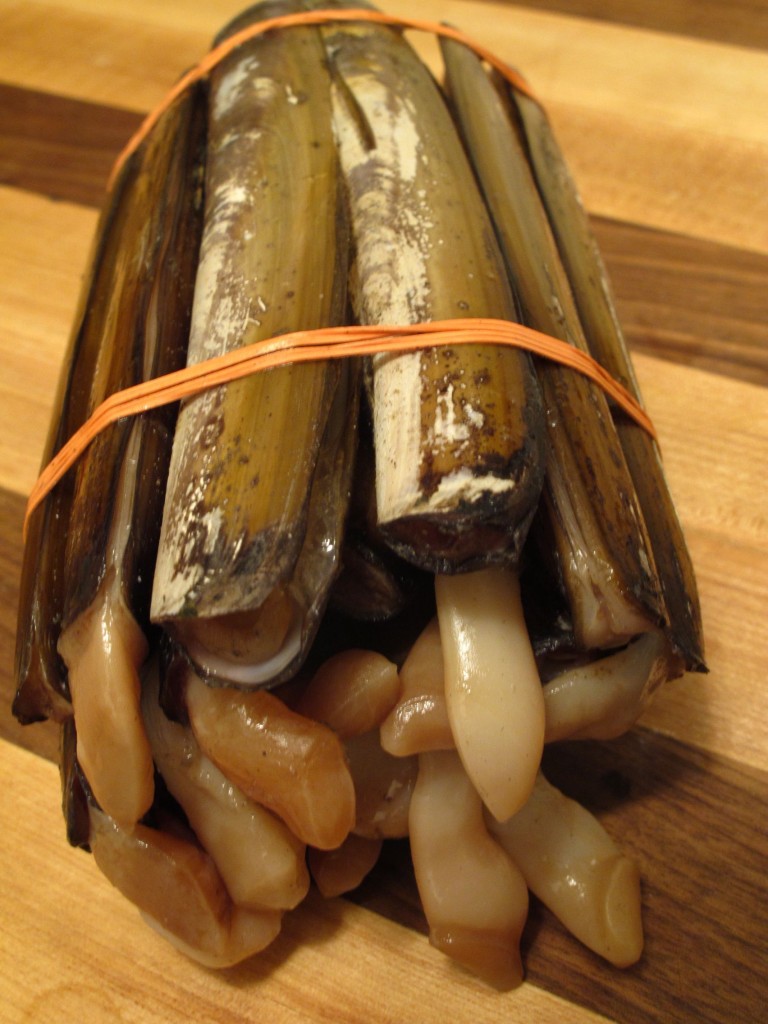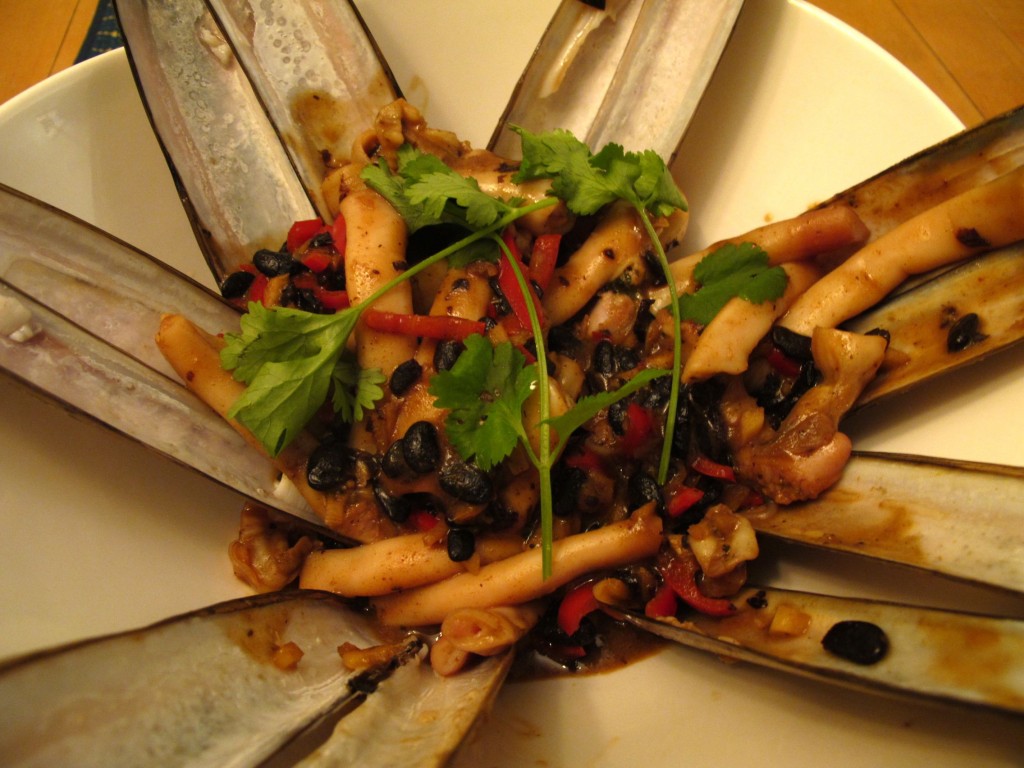Got Acidity? Bring on the Funk.
Like many cooks with pantries full of spices, condiments, fancy oils and a dozen vinegars, I can’t stop myself from adding a pinch of this or a splash of that to whatever dish I’m preparing. Lately, I’ve had the unsettling feeling that when it comes to pairing food and wine, my overzealousness at the stove has been my undoing at the table. With my Vin Vivant series, I aim to educate my palate by working backwards: always trying the wine first, and then creating a dish to go with it to find out what pairings really work for me.
I decided to start with the 2008 Louis Sipp Grand Cru Osterberg Riesling, as it seems to pair with just about anything. Its knee-buckling acidity slapped my palate, then gently pushed me into a chair with an emergence of green apple and apricot notes. Puckering qualities can be off-putting to some, but remember, acidity is your friend when it comes to food. Acidity is a wonderful way to cleanse the palate, and I had a feeling it’d be a great mate for a pungent and savory dish. (It’s also a large part of why the wine you cellar now will mature to taste much more expensive than what you paid for it originally.) So after a little deliberation, I whipped out my wok and decided to make stir-fried, ocean-fresh razor clams in spicy black bean sauce.

I’m thrilled to report that the dish was a hit with the Riesling. I almost think that anything made with black bean sauce could go well with this wine. I wish I’d braised a pork belly and topped it with the sauce to see how the Riesling would perform with fat in the equation – pretty well, I’d imagine.
I made a second dish, rice noodles with cilantro, green pepper, green onion, chive buds, tomato, egg and sweet black vinegar. This did not do nearly as well with the wine as the clams did. This pairing certainly wasn’t offensive; the food and wine just didn’t achieve that elusive third flavor – the effect of the food and wine together achieving something greater than either on its own – seconding my hypothesis that the funkier and more pungent the food, the better it pairs with this wine.
Finally, I tried the wine with sheep’s milk Fromager d’Affinois, a bloomy-rind cheese normally made with cow’s milk. Although the cheese is similar to brie, the piece we had must have aged longer and was therefore stinkier. It was a slam dunk with the Sipp. Now, if only I had a Delorean to pair with the wine so I could taste it in a decade.

Razor Clams in Black Bean Sauce
Ingredients:
2 lbs. of razor clams, cleaned
2 cloves of garlic, minced
1 inch of ginger, minced
1 long spicy red pepper, de-seeded and minced
3 tbsp. of whole fermented black beans, washed, or 2 tbsp. of black bean sauce
1 tbsp. of peanut or canola oil
1 tbsp. of cornstarch mixed with 2 teaspoons of water
A few sprigs of cilantro for garnish
Clam cleaning:
Cut the clam out of the shell by running a paring knife along the membrane that attaches the meat the shell. Pry the shell open and cut the meat out. Some will shatter, as they are much thinner and more delicate than the shells of littleneck or cherrystone clams, hence the name razor. You’ll see a pronounced foot, the part that hangs out of the shell, and a stomach. Cut the tip of the foot and the opposite end of the clam off. Grasp the foot like a pencil and run your fingers down it to break the membrane that connects the foot to the stomach. Cut the stomach off. The stomach, like that of any mollusk, tends to have grainy bits in it so you have a decision to make here: 1) throw the stomach away and just eat the feet, 2) cut the stomach open and scrape out the dark gray matter inside, or 3) just roll with it and rinse the stomachs in cold water to clean out any sediment lurking in the folds. I rolled. Save a few shells for garnish and pat the clams dry.
Cooking method:
Heat a wok until a drop of water sizzles in it, and then add the oil. Add the ginger and garlic and cook for 15-20 seconds; do not brown them. Add the black beans and stir for 15 seconds, then add the red pepper and stir the mixture for 30 seconds to a minute, depending on how hot your cooking vessel is. If it’s very hot, you risk burning the mix but unless you have a restaurant-grade stove with serious BTUs or you used too little oil, you probably won’t have a problem stir-frying the mix for at least 30 seconds. If it starts to stick, add a teaspoon or two of water.
Now, add the clams! Stir vigorously for a minute or two so the clams release their juices. Turn the heat down to medium-high, put the shells on top like a protective tent, and put a cover on your wok. While your clams cook for an additional three minutes, mix your cornstarch and water. Uncover the clams and take the shells off, placing them in a bowl in a star pattern. Push the clams to the sides so they form a ring around the liquid in the middle of your wok. Add your cornstarch slurry to this liquid and stir for a few seconds, and then stir the clams into the sauce for 5-10 seconds before transferring them to your shell-lined bowl. Garnish with a sprig of cilantro.
